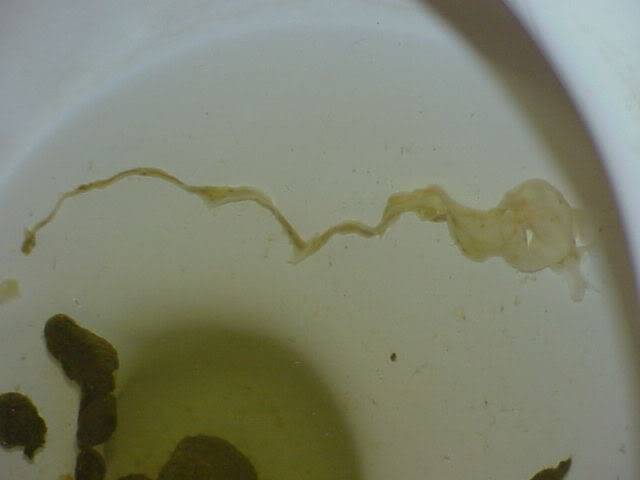Baby stool with blood and mucus: Bloody Stools in Children
Posted onMucus in a Baby’s Poop: Causes & Treatment
Babies’ poop can be a topic of concern and confusion for new parents, especially when they notice mucus in their baby’s stool. While it can be alarming to see, mucus in baby poop is actually quite common and usually not a cause for worry. However, it’s important to understand the potential causes and treatment options to ensure your baby’s health and well-being. In this article, we’ll explore the various reasons why mucus may appear in a baby’s poop and what steps you can take to address it.
What is mucus in baby’s poop?
Mucus in a baby’s poop refers to the presence of a jelly-like substance in their stool. The color of mucus in a baby’s poop can vary from clear to white, yellow, green, or brown, depending on the underlying cause. This can be a common occurrence and is usually not a concern. It can be caused by normal secretions from a baby’s intestines to assist in bowel movement or an allergic reaction to the mother’s diet.
However, if mucus is present in copious amounts accompanied by blood and other symptoms of discomfort, it could indicate a serious health issue such as a stomach infection, intussusception, or cystic fibrosis. It’s always best to consult a pediatrician if you notice any abnormality in your baby’s poop.
Why is there mucus in my baby’s poop?
There can be several reasons why you may notice mucus in baby stool:
1. Infection
Babies have low immune function and can catch infections easily. Viral or bacterial infections can cause inflammation in the intestines, leading to mucus in a baby’s poop.
2. Food allergy or intolerance
Babies may develop mucus in their poop if they have an allergy or intolerance to a particular food. In such cases, the baby may also have other symptoms like bloating, gas, and skin rashes.
3. Teething
Another common reason for mucus in baby poop can be excessive drooling and undigested saliva.
4. Cystic fibrosis
A genetic disorder that affects the respiratory, digestive, and reproductive systems, and can cause mucus buildup in various organs, including the pancreas and intestines, leading to mucus in a baby’s poop.
5. Intussusception
A condition where one part of the intestine slides into another, causing a blockage and leading to mucus in baby stool. Other symptoms may include abdominal pain, vomiting, and lethargy.
Treatments to prevent mucus in baby poop
Treatment for excess mucus in baby stool depends on the underlying cause. If it is caused by an infection, medication may be prescribed to treat it. However, it is important to note that mucus in a baby’s stool can be a sign of a medical emergency in rare cases, such as intussusception. Therefore, it is crucial to consult a pediatrician if a baby appears unwell or has other gastrointestinal symptoms.
In most cases, dietary changes, such as switching to a different formula or adjusting the mother’s diet if breastfeeding, can help resolve the issue. If the mucus is caused by an allergic reaction to a food or dairy products, then you should immediately eliminate such food items. For example, in case you suspect that the addition of cow milk to your baby’s diet has led to baby poop with mucus, then you should avoid giving your baby cow milk and consult a pediatrician.
Additionally, formula-fed babies may also pass mucus in their stools. The best way to avoid this is to switch to a milk-free option. You can also opt for almond or soy milk. The best approach for the treatment should be discussed with your doctor.
Health difficulties related to bleeding organs and other serious concerns
If your baby has been execreting mucus in poop for a long time, then there can be serious health consequences. Consult a doctor immediately for a detailed examination and treatment.
As a parent, if you notice mucus in baby stool for one day, it might not be a serious issue, but if this is often happening, then you must consult a doctor.
When should you go to the doctor if you found baby poop with mucus?
If your baby continues to pass mucus in stools for consecutively two days, then you should consult a paediatrician. If there is blood in the poop, multiple episodes of diarrhea, or signs of pain, it is recommended to contact a doctor immediately. In the meanwhile, you should ensure that your baby is well-fed and hydrated.
Final Thoughts
In conclusion, mucus in a baby’s poop can be a cause of concern for parents. However, it is not always a sign of a serious health issue.
References
1. Johansson, M. E. V., et al. (2013). The gastrointestinal mucus system in health and disease. NCBI
2. Winslow BT, Westfall JM and Nicholas RA. (1996). Intussusception. American Family Physician
3. de Silva, G W K C; et al. (2022). Blood and mucous stools in an exclusively breastfed infant due to cow’s milk in the maternal diet. Sri Lanka Journal of Child Health
Baby Poop: Colors, Types, and What They Mean
Baby poop is probably something you were expecting to deal with, but did anyone tell you how varied the contents of your little one’s diapers could be? Runny or firm, black, green, or yellow—even mucus in your baby’s poop can be part of the adventure.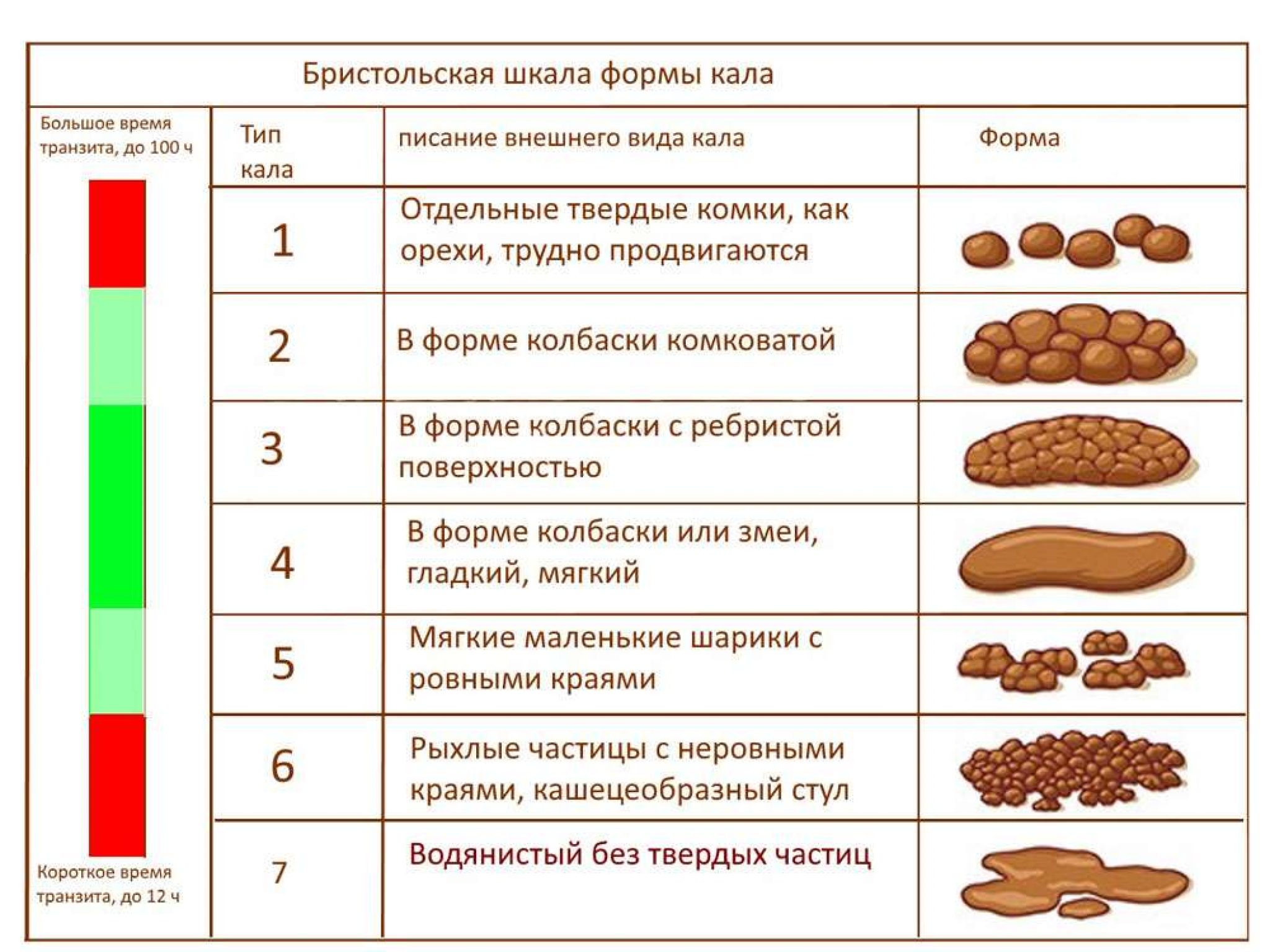
Your Baby’s Poop — What’s Normal?
You might be wondering what healthy baby poop should look like. It’s a fair question, because the color and consistency of your baby’s poop changes over time depending on various things, especially what your baby is eating.
Here’s a rough guide to what you’re likely to find in your little one’s diapers over the first few days, weeks, and months after your baby is born.
Meconium
Your baby’s first few diapers will likely contain a gooey, dark-green, tar-like substance, with hardly any smell. This is called meconium.
This is a distinct type of poop made up of things like mucus, skin cells, lanugo hairs, and other particles your baby swallowed, along with the amniotic fluid, while still in the womb.
It takes a few days for your little one to pass all the meconium out of their system, but as this happens, they’ll start to have regular baby poops. The color will shift from being almost black to a yellowy green and there may be less mucus present. Speak to your baby’s healthcare provider if your baby’s first bowel movement doesn’t happen within the first 24 hours after birth.
Regular Baby Poop
Once the meconium is out of your baby’s system, their regular poop can vary a lot, depending on how they’re being fed. Here is what you’ll probably find in your little one’s diapers:
-
Breastfed babies. If you’re breastfeeding your baby, their stools in the first few months may look a little like Dijon mustard, with a slightly runny consistency, and possibly with whiteish, seed-like fat particles. A little bit of mucus in baby poop is normal, too. The color of your baby’s poop may also change depending on what you’re eating. For example, if you eat green vegetables like spinach, you might see a green tint in the contents of your little one’s diapers.
-
Formula-fed babies. If your baby is getting their nourishment from formula, their poop won’t usually be as runny as that of a breastfed baby. It will have a more paste-like consistency (although it shouldn’t be firmer than peanut butter) and a darker yellow or tan color.
-
Babies in the weaning stage. When you start introducing solid foods to your little one, which is recommended from around 6 months, you’ll start to see (and smell!) some major changes in the contents of your baby’s poopy diapers. Their stools will get firmer, and the color will vary more widely, too.
If your child is eating finger foods, you might see undigested bits of food like the skins of peas or tomatoes. This is because your little one’s digestive system is still getting the hang of processing all these new foods. The weaning period is also when your little one’s poop will start to smell stronger, due to the extra fats and sugars in their diet.
What the Colors of Baby Poop May Mean
You might be surprised by a change in the color of your baby’s poop, which can range from the mustardy hues of breast-milk poop and the yellow-tan of formula-fed baby poop to various other shades of yellow, brown, and even green.
Green Baby Poop
Green poop can be alarming the first time you see it, but it’s usually harmless. All sorts of things can cause it, from certain medicines (taken by your baby, or by you if you’re breastfeeding) to green foods eaten by your baby directly or passed on through your breast milk. Sometimes, what you see is simply a product of your little one’s normal digestion.
Generally, all the earth tones (yellow through green and brown) are OK, but if you ever need reassurance about the color of your baby’s poop, don’t be shy about reaching out to your baby’s healthcare provider for advice.
Warning Colors
Certain colors of stool can be a sign of a possible health issue. Always check in with your baby’s healthcare provider if your baby’s poop is any of the following colors:
-
Red. Traces of red can be due to blood in your baby’s poop, so it’s important for your baby’s healthcare provider to investigate what might be causing it.
Keep in mind, though, that there are plenty of harmless reasons for red poop. In a newborn baby, a little blood may have been swallowed during delivery. If you’re breastfeeding, it might be that your nipples are bleeding, and the blood is mingling with your breast milk. If your little one is eating solids, it could be a certain food, such as beets, coloring their poop red.
-
Black. A black stool could, in some cases, be caused by blood, which may turn from red to black inside the intestines over time. It’s important to know that very dark green poop can sometimes appear black. Green baby poop—even a dark shade of the color—is usually nothing to worry about. Meconium can also look black, and this isn’t a problem.
-
White or gray. Very pale white or clay-colored stools are very rare, but if you see poop this color in your baby’s diaper, call your baby’s healthcare provider, as it could be a sign of a liver condition that needs treatment.
Mucus in Baby Poop
As mentioned, mucus in baby poop is most often harmless and normal.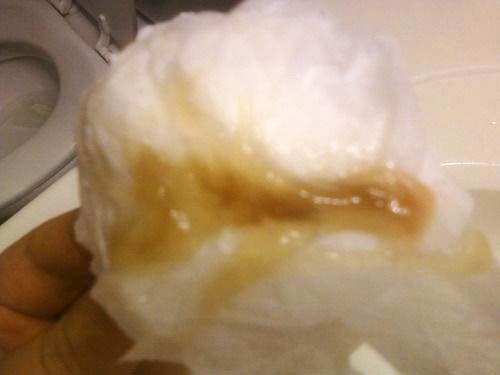
However, if mucus in baby poop is accompanied by other symptoms, this could be an indication of an infection or digestive issues. Symptoms to look out for include blood in the poop, diarrhea, high fever, loss of appetite, vomiting, and weakness. If you notice any of these symptoms, especially alongside mucus in your baby’s poop, contact your baby’s healthcare provider.
Baby Poop Color Chart
To help you visualize the array of baby poop colors, here is a handy chart:
How Often Will Your Baby Poop?
The frequency of your baby’s poops will change as your little one grows and their digestive system develops, but it’s also affected by the feeding method that you use.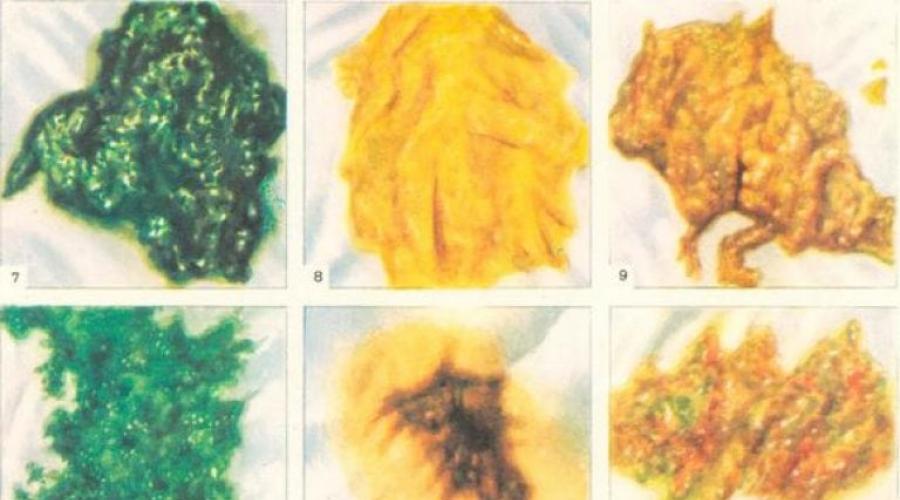
If You’re Breastfeeding
If your baby is breastfed, they’re likely to poop more frequently than their formula-fed peers. As a rule of thumb, after the first few days, you might see anything between 2 and 5 bowel movements a day, up until your little one is around 6 weeks old.
Keep in mind that after 3 to 6 weeks of age, your breastfed baby might sometimes go several days between bowel movements. This is because your baby’s digestive system is able to process breast milk very efficiently, leaving very little solid waste.
After 6 weeks, your baby may have fewer daily poops. One reason may be that, by this time, your breast milk usually no longer contains colostrum, which can act as a laxative.
If You’re Formula Feeding
If your little one is getting all or most of their daily nutrition through formula feeding, after the first few days they may start filling their diaper at least once a day, but it’s not out of the ordinary for them to sometimes go a day or two without a bowel movement.
If you’re ever concerned about how many poops your little one is passing, consult your baby’s healthcare provider.
Can Your Baby Make Too Much Poop?
The amount of poop your baby makes each time can vary. As long as their weight gain is on track, and the stools are soft, all is probably fine.
If your baby’s poop seems watery or is filled with mucus, and they are pooping much more frequently than usual or has other symptoms, like a high temperature (100.4 degrees Fahrenheit or above), this could be diarrhea.
See your baby’s healthcare provider if you think your little one might have diarrhea, especially if they’re under 3 months.
It’s worth knowing that newborns and younger babies are more likely to produce lots of little poops one after the other. If you notice that your baby has just had a bowel movement, you might be able to save yourself an extra diaper change by waiting just a little longer in case there’s more to come.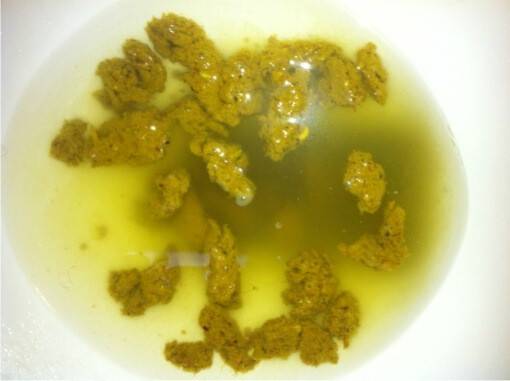
Each one of those diaper changes could be earning you Pampers Cash that you can use toward gifts, coupons, and discounts. Download the Pampers Club app to get started right now!
When There’s No Poop — Constipation
With all the variation in how often your baby poops, you may sometimes wonder how you can tell if your little one is constipated.
Constipation in babies is more common after the introduction of solids, but it can occur in younger babies, too. Here are some typical signs of constipation:
-
In a newborn baby. Firm stools that come less than once a day.
-
In an older baby or toddler. Hard, compact stools that only come every three or four days.
-
In a baby or child of any age. Large, hard, and dry stools that are painful to pass; blood on or in your child’s stools; you child strains for more than 10 minutes without passing any stool at all.
What Can You Do About Constipation?
If you think your baby is constipated, see their healthcare provider for advice.
Call their provider immediately if your little one doesn’t get better or has other symptoms like:
-
vomiting
-
fever
-
lethargy
-
loss of appetite
-
blood in the stool.
How to Tell if Your Baby Has Pooped
Your baby’s poop may not always smell much, especially in the first few weeks, so how can you tell when a diaper change is needed?
One tell-tale sign is straining: Passing a stool is hard work for small babies. You might notice your little one getting red in the face with the effort of pushing out that poop.
You’ll soon get to know your baby’s facial expression when they’re having a bowel movement, or—when they’re old enough to stand and walk—the squatting pose that they adopt when they need to go.
Use our handy Diaper Size and Weight Chart to make sure your baby’s diapers always fit properly.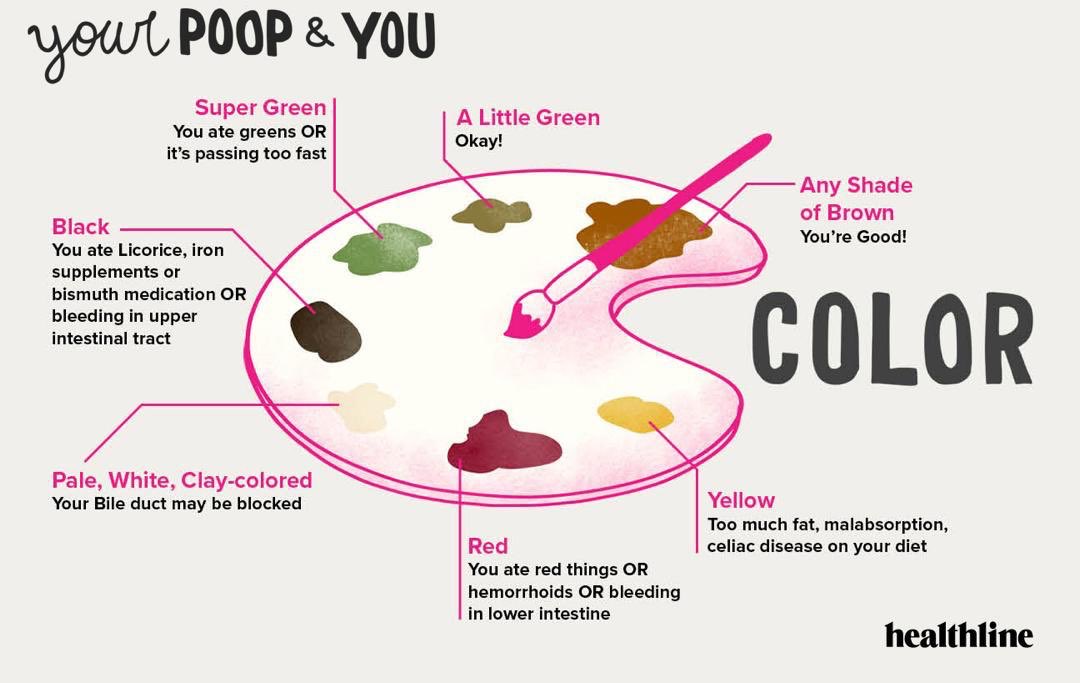
The Bottom Line
You might not have realized until now just how much there is to know about your baby’s poop, but don’t worry: There’s no need to go over every single dirty diaper with a magnifying glass! Once you get used to your little one’s bowel movement patterns, and the usual color and texture of their poops, you’ll probably notice any changes quickly.
Just keep an eye on color and consistency and together with your baby’s healthcare provider, you can take any steps needed to get things back to normal.
❰Mucus in Feces❱ in Adults — Causes and Treatments
Mucus in the stool may occur due to physiological causes. After all, the production of a small amount of mucus into the intestinal lumen occurs constantly and its traces, indeed, can sometimes be seen in the feces.
But most often visible impurities of mucus in the feces of an adult can indicate such pathological conditions as:
- colitis
- colon polyp
- colon cancer
- diverticular disease of the colon
- dysbacteriosis
- irritable bowel syndrome
- as well as disorders of absorption processes in the lumen of the colon
Mucus in the feces is a possible symptom of a fairly wide list of diseases.
You can make an appointment with a proctologist on our website.
Appointment
Why mucus appears in the stool
When the amount of mucus increases, it is often associated with various pathologies. Certain disorders can develop into chronic ones, which is considered a serious threat. Most often, mucus in the stool is a symptom of an inflammatory process. For example, if the substance is slippery and diarrhea, the likelihood of an intestinal infection is high. The appearance of blood in the stool and pain in the abdomen indicate the risk of Crohn’s disease, ulcerative colitis, and even cancer.
Clear mucus stool possible as a side effect of certain drugs and dietary products. For example, NSAIDs, flatulence medications, smoking, and even drinking coffee increase mucus. If you exclude something from this list, you can normalize the concentration of the substance.
What diseases cause mucus in the stool
Jelly-like mucus in the stool can indicate:
- irritable bowel syndrome.
The functioning of the intestine is impaired in the absence of pathological formations. Symptoms of a bowel problem are alternating constipation and diarrhea. The presence of mucus in the feces is typical for this disease
- Crohn’s disease. The inflammatory process is chronic, often difficult, and acts as a catalyst for the appearance of malignant tumors. Lesion from oral cavity to rectum. In most cases there is clear mucus in the stool
- ulcerative colitis. It causes the appearance of ulcers on the mucous membrane. Due to the fact that they bleed, rot, red mucus may appear in the stool. Symptoms also include abdominal cramps, bloating
- proctitis. Inflammation in the rectum. A characteristic sign is white mucus in the stool in an adult
- allergic colitis. Peculiar to children and manifests itself as a reaction to cow’s milk
- oncology of the rectum or colon. The key sign is the presence of blood in the stool. But, feces with white mucus are also possible
- food poisoning.
In rare cases, it is accompanied by blood and copious amounts of mucus. Often things go back to normal after a few days, but if it lasts longer, see a doctor
- membranous colitis. In this case, yellow mucus appears in the stool in an adult
This is only a small part of the diseases accompanied by mucus in the stool. Sometimes these symptoms are associated with temporary indigestion. Jelly-like mucus in the stool in an adult is considered normal, but if we are talking about the minimum amount and transparency. It is best to undergo diagnostics at Mediland Medical Center in order to detect the disease in a timely manner.
When to see a doctor
If an adult has excessively large amounts of stool with mucus, it is easier to say mucus instead of regular stool, this is a signal of a serious illness. You need to see a doctor. Other symptoms are also possible:
- there is blood in the stool
- yellow mucus in feces — purulent or bacterial process, also one of the signs of hemorrhoids and polyps
- frequent diarrhea
- spasms, abdominal pains
Mucus with feces with any signs should be regarded as the need to visit a doctor for a complete examination.
White stool is one sign of serious diseases: hepatitis, liver tumors, problems with the pancreas. Stercobilin affects the color of feces, if it falls or decreases, the development of pathologies dangerous to the human body may begin.
Diagnostic methods for the appearance of feces with mucus
Doctors of Mediland Medical Center for maximum accuracy in diagnosing thick mucus in the feces use different approaches:
- detailed blood test
- coprogram
- stool examination for infections, occult blood
- colonoscopy — examination of the mucous membrane of the rectum and colon with a colonoscope
- sigmoidoscopy — diagnostics of the rectum and sigmoid colon
- examination of the stomach, esophagus
- video capsule endoscopy is prescribed for the study of the digestive tract.
A capsule with mini-cameras is used, the patient swallows it, doctors get the opportunity to assess the patient’s condition
- referral for CT and MRI
If mucus is found in the stool, for treatment, you need to make an appointment with a doctor. With early diagnosis, the likelihood of a quick recovery and a decrease in the risk of complications of the disease increases. Mediland MC offers basic instrumental and laboratory diagnostic approaches. In addition, the patient consults with advanced doctors.
What to do
The appearance of an admixture of mucus in the stool in an adult requires a total examination of the colon by colonoscopy. It is a visual examination of all parts of the large intestine that will allow not to miss the initial stages of dangerous diseases.
At Mediland Medical Center, colonoscopy is performed under intravenous anesthesia and does not cause any discomfort to the patient. Research data can be recorded on a computer hard drive and, if necessary, handed out to the patient.
Before signing up for such an examination (colonoscopy), it would be rational to consult a proctologist. The specialist will select the correct examination algorithm, depending on the specific situation, if necessary, appoint consultations of doctors of related specialties and draw up a treatment program based on the data received.
What not to do
Do not under any circumstances use information obtained from the Internet to form your own idea about the cause of health complaints and methods for their elimination.
Do not take advice from friends, neighbors and acquaintances on how to get rid of the problem, based on their positive experience. Remember that mucus in the feces can be a symptom of various diseases, and what gave an excellent result in the case of your «adviser» can have a completely opposite effect on your body.
It should be remembered that self-treatment (including, at first glance, successful), the patient can level the symptoms of the disease, but not cure the disease.
Do not be afraid of a visit to the doctor and diagnostic procedures. Qualified proctologists of Mediland Medical Center perform all procedures correctly, without causing any physical or moral suffering to the patient.
It is important to remember — the loss of time in matters of diagnosis and treatment often turns simple cases of diseases into big health problems! Proctologist, Surgeon, Phlebologist PhD, Associate Professor, is a member of ESCP, IPS
Important to know
What to do
The appearance of an admixture of mucus in the feces in an adult requires a total examination of the colon by colonoscopy. It is a visual examination of all parts of the large intestine that will allow not to miss the initial stages of dangerous diseases.
At Mediland Medical Center, colonoscopy is performed under intravenous anesthesia and does not cause any discomfort to the patient.
Before signing up for such an examination (colonoscopy), it would be rational to consult a proctologist. The specialist will select the correct examination algorithm, depending on the specific situation, if necessary, appoint consultations of doctors of related specialties and draw up a treatment program based on the data received.
What not to do
Under no circumstances should you use information obtained from the Internet to form your own idea of the cause of complaints and methods for their elimination.
Do not take advice from friends, neighbors and acquaintances on how to get rid of the problem, based on their positive experience. Remember that mucus in the feces can be a symptom of various diseases, and what gave an excellent result in the case of your «adviser» can have a completely opposite effect on your body.
It should be remembered that self-treatment (including, at first glance, successful), the patient can level the symptoms of the disease, but not cure the disease.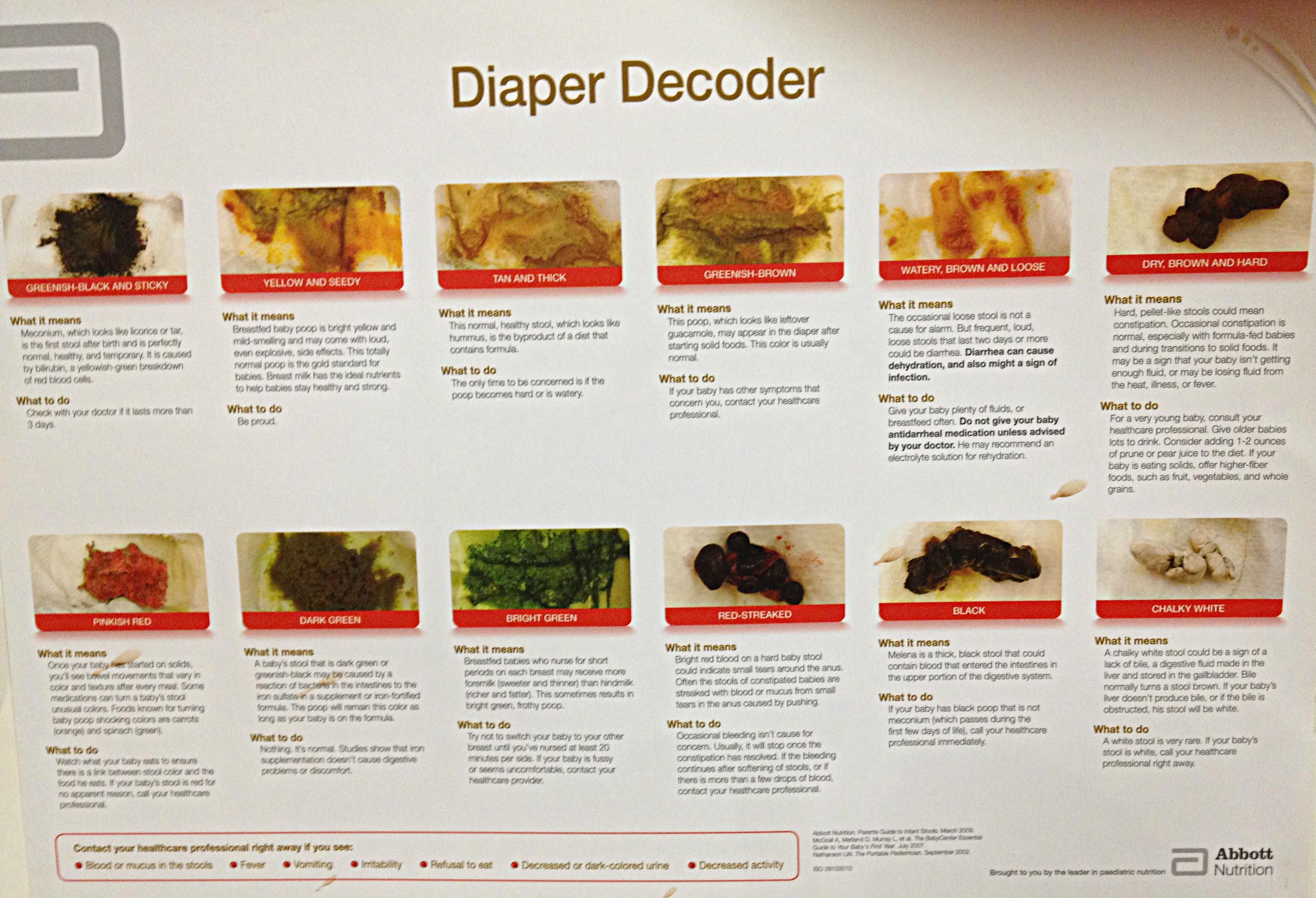
Do not be afraid of a visit to the doctor and diagnostic procedures. Qualified proctologists of Mediland Medical Center perform all procedures correctly, without causing any physical or moral suffering to the patient.
It is important to remember — the loss of time in matters of diagnosis and treatment often turns simple cases of diseases into big health problems!
Appointment
Like it? Share with friends:
Diarrhea in a cat (cat) — what to do, how to treat at home
Diarrhea is a digestive disorder, which is expressed in a change in the consistency of feces to a liquid or watery form and an increase in the frequency of the urge to defecate.
Many owners do not think this problem is serious, although in fact it requires special attention from the owner and specialist.
It is also worth noting that diarrhea is not an independent disease, but only a consequence of existing pathologies.
Symptoms of diarrhea in cats
The main and only symptom of diarrhea is frequent and loose stools, which is repeated more than 3 times a day. In addition, a cat or cat sometimes has fecal incontinence and the presence of blood streaks in it. Flatulence and gas emission are also possible.
Let’s single out the characteristic symptoms of diarrhea:
- frequent defecation;
- the consistency of the stool changes — it becomes frothy, watery, has impurities of blood streaks, mucus;
- the hue may change — normal feces are brown, and with diarrhea there is a lighter or greenish stool;
- the smell may be putrid, sour, offensive.
In addition to diarrhea, the cat may lose its appetite. She becomes lethargic, lies more, hides in secluded places, loses weight. Sometimes there is an increase or decrease in body temperature.
In some cases, vomiting occurs along with diarrhea. Then dehydration intensifies and urgent measures must be taken to treat the animal. First of all, it is necessary to replenish the lost fluid, as well as stop diarrhea and vomiting.
Causes of diarrhea in cats
Diarrhea can be caused by several causes at once. We have divided them into separate groups to make it easier for you to understand what causes diarrhea in cats.
1) Food reasons
- Changing the usual diet — switching from one food to another and vice versa, changing water, unbalanced nutrition.
It is necessary that the transition to a new diet in a cat is carried out gradually. To do this, you must reduce the amount of familiar food and increase the amount of new. If this rule is neglected, then the microflora and enzymes of the gastrointestinal tract will not be able to abruptly adjust to the new mode of operation and will “go on strike” in the form of diarrhea.
- Improper feeding — the inclusion in the diet of foods that cause indigestion.
- Overfeeding — overfeeding affects digestive disorders, but regurgitation and vomiting are most often involved. Especially when the cat eats quickly, while swallowing air.
- Food poisoning is the body’s reaction to eating poor-quality, spoiled food.
We boldly include those who like to eat waste from the trash and those who love to gnaw flowers into the risk group. When poisoned, the cat’s body tries its best to get rid of toxins that threaten its safety, as spoiled food causes intoxication.
- Food allergy — here we usually present redness of the skin, itching, watery eyes. Diarrhea is also one of the symptoms of allergies.
This reaction does not necessarily make itself felt immediately after the first intake of a new food. Manifestations can intensify over time — with each new hit of the «aggressor» in the cat’s body.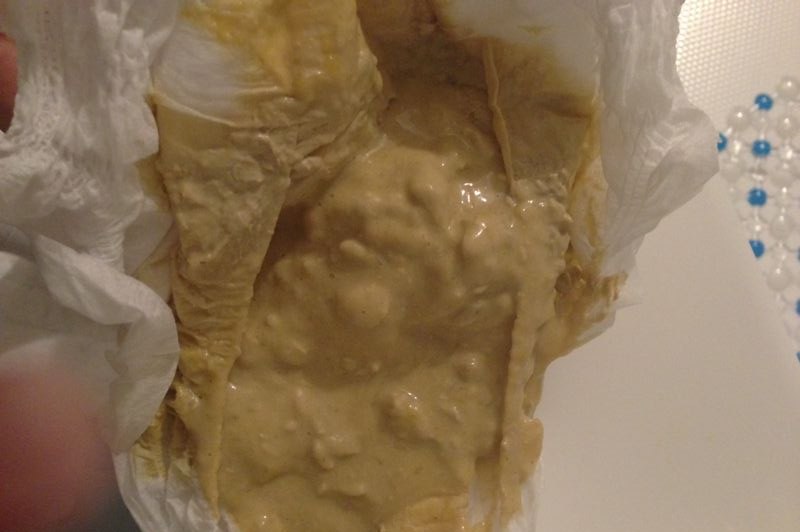
- Intolerance, intestinal sensitivity to certain food components.
What is the difference between intolerance and allergy? An allergy is a feature of the immune system, its pathological reaction to something that has entered the body. Intolerance is the inability of enzymes to digest foods that contain a particular ingredient, such as gluten. In this case, the gastrointestinal tract reacts to the problem with regular vomiting or diarrhea.
2) Contagious causes of diarrhea in a cat
- Parasitic infestation (helminthiasis) — these are helminths or worms, in simple terms.
To prevent their occurrence and spread, it is recommended to regularly deworm pets. If a significant number of parasites live in the cat’s body, they cause intestinal irritation and malfunctions, such as diarrhea.
- Infectious diseases of the gastrointestinal tract:
- Bacterial (eg salmonellosis, colibacillosis).
Transmission of pathogens is possible through feed, water and excretions of sick animals. Symptoms may not appear for a long time, and then triggered by severe stress or other comorbidities.
- Protozoan infections (cryptosporodiosis, trichomoniasis, toxoplasmosis).
From the point of view of the symptoms of the gastrointestinal tract, we distinguish giardiasis and trichomoniasis. They are easily transmitted through the faeces of sick cats, and in both cases, diarrhea is the leading symptom.
- Viral (viral leukemia, panleukopenia).
Coronavirus gastroenteritis, viral leukemia, panleukopenia, viral immunodeficiency should be noted among viral infections. Infection occurs in most cases by contact — through the discharge, feces of sick animals. Diseases are quite severe and can lead to death. However, some of them are preventable by vaccination.
3) Pathologies associated with the digestive system:
- Pancreatitis — inflammation of the pancreas.
When it spreads to the intestines, diarrhea is observed.
- Diseases of the kidneys. Diarrhea in this case is an unobvious but common symptom. It manifests itself most often in the later stages of the disease.
- Pathology of the liver and biliary tract. The liver is a fairly multifunctional organ, and the general condition and quality of life of the animal depends on its work. The gastrointestinal tract also reacts to changes in the liver, so one of the symptoms of its damage may be diarrhea and a change in the color of the stool in a cat.
- IBD — inflammatory bowel disease. This is the name of a group of symptoms (vomiting, diarrhea, change in appetite), which are persistently repeated and not amenable to standard therapy. This is a complex diagnosis that is often made after all other possible problems have been ruled out.
- Metabolic disorders, including diabetes mellitus. Most often occurs in old age. In case of violations of metabolic processes, the work of internal organs changes, and secondary infections also appear.
- Oncological diseases — neoplasms affecting the internal organs of the cat, most often its digestive system and kidneys. May be accompanied by various clinical signs.
4) Other causes:
- Certain medications, such as antibiotics and NSAIDs (non-steroidal anti-inflammatory drugs).
Medicines can disturb the microflora of the digestive tract, thereby causing diarrhea.
- Heat stroke.
This is a dangerous condition in which the body overheats and the animal becomes restless. With sunstroke, there may be vomiting and convulsions, diarrhea is possible, and in some cases there is loss of consciousness.
- Stress is a negative reaction to a move, a long trip, a new pet in the house, etc.
Each such situation is capable of provoking stress. In addition to diarrhea, it is possible to observe in a cat excessive licking of wool and skin, unusual behavior, active molting, involuntary urination, loss of appetite.
- Hairballs in stomach
If hair is found in the intestines of a cat, it can irritate the mucous membranes and villi of the gastrointestinal tract, thereby causing diarrhea. But more often in this case there is constipation, rather than diarrhea.
- Pregnancy and postpartum period.
New food, food from the table of different origin, the presence of secondary diseases and infections, overeating, helminthiasis, hormonal changes — all this can cause diarrhea in a pregnant cat. However, the appearance of diarrhea a couple of days before childbirth is considered the norm.
- Foreign objects in the digestive tract
If there is intestinal obstruction, vomiting and no stools occur. But blockage can be caused by different reasons, which means that the appearance of diarrhea can also be one of the symptoms.
Diarrhea in cats without complications
If you notice periodic diarrhea in your pet, and at the same time he does not lose weight, appetite, looks active — this is still a reason to visit the veterinary clinic.
To understand what to do if the cat has diarrhea, you need to assess the patient’s well-being. If the animal is deteriorating or has other symptoms, do not treat it yourself.
If the diarrhea is due to a sudden change in diet, the cat should be on a fast diet for several hours, but the water should be left.
Important : Felines should not be without food for a long time. Prolonged hunger has a very detrimental effect on their liver, and then on the whole body as a whole. If the cat does not eat for more than 12 hours, you should be wary and show the pet to the doctor.
Diarrhea with water
This phenomenon in cats is one-time. But it is worth considering that this symptom may indicate the onset of the disease. With a single episode, the cat needs to increase its water intake.
Loose stools with blood or mucus
The large intestine protects itself, its walls, by secreting a large amount of mucus. If a cat has diarrhea with blood, this indicates a slight lesion of the capillaries of the large intestine. Then you can suspect helminthic invasion, food poisoning, irritation of the wall of the large intestine.
If there is blood in the stool, and it can be scarlet, cherry, brown, black or streaked, then it is necessary to exclude or confirm the presence of a foreign body in the stomach or intestines, as well as the presence of neoplasms or viral infections. This condition is characterized as acute, so it is urgent to take the cat to the clinic.
Diarrhea and vomiting in cats
If the cat vomits and diarrhea is observed, then we can assume poisoning, neoplasms, a foreign body in the gastrointestinal tract, a viral infection, pancreatitis, etc.
Color of diarrhea
The color of the stool can be used to determine the causes of diarrhea. Let’s designate them.
-
Black
Characteristic of a high level of iron in the body of a cat (for example, due to the consumption of raw meat in large quantities).
Black-red color indicates bleeding in the gastrointestinal tract. The reasons may be poisoning, neoplasms, the presence of foreign bodies, etc. In this state, help is provided to the cat immediately.
-
Yellow
Yellow diarrhea indicates a violation of intestinal motility, improper digestion, problems with the bile ducts.
Normally unformed yellow stool occurs only in kittens on a milk diet. In an adult cat, diarrhea of this color indicates a violation of the liver.
-
Green
This diarrhea warns you that your cat has eaten spoiled foods that have caused putrefaction and fermentation.
The pathological causes of the green color of feces include: parasitic infections, a sharp change in food, increased intestinal motility, acute inflammation of the gastrointestinal tract.
-
White
He talks about problems with the biliary tract, and also with the liver or pancreas.
Treatment of diarrhea in cats and cats
Often owners have a question — how to treat diarrhea in a cat. Let’s talk briefly.
Therapeutic deworming is indicated for helminthic invasion. Now drugs are actively used in a variety of dosage forms (tablets, suspensions, drops on the withers) based on milbemycin (Milbemax), praziquantel and fenbendazole (Kaniquantel), praziquantel and pyrantel (Drontal).
When it comes to pathologies of the liver and kidneys, therapy regimens corresponding to a particular disease are prescribed. In addition, supportive therapy is carried out.
In intestinal diseases, there is pain in the abdominal cavity. In such cases, antispasmodic drugs (Spasmalgon, Papaverine) may be prescribed.
With profuse diarrhea, as well as in case of vomiting, there is a risk of dehydration. Then infusion therapy (droppers) is used — intravenous administration of solutions (Sodium chloride, Ringer’s solution, Ionosteril, Sterofundin).
In terms of the duration of therapy, sometimes the treatment takes only a couple of days, while in other cases it is possible to achieve a stable effect only after a few weeks of treatment.
Therefore, if the cause of the disease is established correctly, then the treatment of diarrhea in a cat leads to recovery. To do this, the doctor needs to collect a complete history:
- presence or absence of annual vaccination;
- taking anthelmintic drugs and the frequency of their use;
- type of food or natural food composition;
- application of vitamins;
- the possibility of using inedible products: leaves or parts of plants, foreign objects, tablets that could be freely available for the animal.
The doctor conducts a complete examination of the cat, measures its body temperature, determines the degree of dehydration, the condition of the mucous membranes, pain in the abdomen. After that, the clinic will take blood tests, do an ultrasound of the abdominal cavity, and possibly collect tests for infections accompanied by intestinal symptoms.
At home
To properly treat diarrhea, you need to understand the underlying cause. It is very important to know that the dosage of drugs for animals is different from that for humans. They can not be dosed for a cat, as for a baby.
Important : We do not recommend self-medication, because only a specialist can answer the question of what to give a cat for diarrhea.
At the same time, according to the doctor’s prescription at home, you can independently give your pet adsorbents — Smecta, Regidron, Polysorb, Enterosgel, activated carbon. These are the most common remedies for stool disorders.:max_bytes(150000):strip_icc()/advice-about-bright-red-blood-in-stool-796937-v3-004a17fa66384362918ed65f63233acd.png)
Fortiflora for cats, Lactobifadol, Evitalia Vet, Vetom help restore intestinal microflora. With pain in the abdominal cavity, you can give the animal antispasmodic drugs prescribed by prescription, for example, Drotaverine, Papaverine.
Veterinary help
You have already understood that with all types of diarrhea, you need to go to the veterinary clinic. We also found out what diseases and conditions diarrhea can accompany and took into account that therapeutic treatment will be different for different pathologies. Therefore, the owner must clearly record the symptoms of his pet in order to help the doctor to make a complete clinical picture.
A veterinarian is required if the cat:
- is vomiting;
- is noted to refuse food and water, she lies a lot and does not want to walk;
- the temperature rose above 39.
0 degrees;
- the frequency of going to the stool tray is more than 4-5 times a day.
It is essential to contact the clinic if:
- the kitten is less than 1 year old;
- there is a temperature;
- the animal does not eat or drink;
- the color of the stool has changed, there is blood, mucus in the feces;
- diarrhea is accompanied by vomiting;
- observed weight loss;
- marked convulsions;
- diarrhea lasts more than two days;
- reduced activity;
- the frequency of defecation is increased more than 5 times a day.
Medications
Now let’s name the main antidiarrheal drugs, answering the question, what else can be given to a cat for diarrhea:
- Loperamide — Use only after consulting a veterinarian. Not suitable for independent use. It has a strong effect on intestinal motility, to the extent that after acute diarrhea, constipation can occur.
- Smecta is an adsorbent that stops diarrhea well. It can be used on kittens and pregnant cats.
- Enterosgel is an adsorbent that removes toxins and allergens from the body. It is used when poisoning is suspected. Can also be given to kittens and pregnant women.
- Enterofuril is an antimicrobial drug. Suppresses the growth of pathogenic microflora that can cause diarrhea in a cat.
Do’s and Don’ts for Diarrhea in Cats
If your pet has diarrhea, there are some important guidelines to follow. Let’s list them:
- Give food warm. So it will be more pleasant to smell and easier to digest.
- Boil or steam natural foods, as raw, fried foods irritate the mucous membranes. To facilitate digestion, food is crushed in a blender or mashed.
- Give your pet plenty of clean water to replenish moisture loss.
- When feeding industrial products, transfer the animal to treatment lines to restore the gastrointestinal tract (Hill’s Prescription Diet I / D, Royal Canin Gastro Intestinal moderate calorie, Purina EN, Farmina Vet Life Cat Gastrointestinal).
- Reduce portions, but feed frequently — every 2 hours, 1-2 teaspoons.
What to do is strictly prohibited:
- Give raw meat products, vegetables, sour milk, fatty meat and fish, lard, milk, vegetable and butter, bread, sweets, etc. from the table.
- Self-administer medicines without knowing their exact effect and proper result.
- For a long time to withstand the cat’s hunger, rages of the desire to «cleanse» the gastrointestinal tract.
Cat Diarrhea Diet
Feeding during diarrhea depends on the cat’s diet. Therefore, we will answer the popular question: what to feed a cat with diarrhea.
If she consumes industrial feed, then a diet based on therapeutic diets is necessary. This is an easier option for digestion. If the cat eats only natural food, then it is advisable to choose one type of lean protein (chicken, turkey, rabbit), one type of carbohydrates (cereals, vegetables), and you can also offer him baby food based on meat tastes.
Spicy, fried, salty, dried, raw, dairy should not be given! It is also required to exclude food from the table and any goodies.
During a flare-up, it is better to remove dry food completely and give only wet food. If the cat does not tolerate it well, you need to choose a diet for animals with sensitive digestion.
For diseases of the gastrointestinal tract, the Gastrointestinal range of feeds prescribed by doctor’s prescription is well suited. They help support digestion and stool, and keep your pet at a normal weight.
Prevention
The basis for the prevention of diarrhea in cats is to feed a commercial balanced diet with a suitable expiration date. You also need to follow the storage rules: dry food should be in a closed pack, and moist after opening it is better to transfer it to a glass container and put it in the refrigerator.
If the animal is on a natural diet, then it must be made balanced. To do this, you can seek the advice of a veterinarian.


 Keep in mind, though, that there are plenty of harmless reasons for red poop. In a newborn baby, a little blood may have been swallowed during delivery. If you’re breastfeeding, it might be that your nipples are bleeding, and the blood is mingling with your breast milk. If your little one is eating solids, it could be a certain food, such as beets, coloring their poop red.
Keep in mind, though, that there are plenty of harmless reasons for red poop. In a newborn baby, a little blood may have been swallowed during delivery. If you’re breastfeeding, it might be that your nipples are bleeding, and the blood is mingling with your breast milk. If your little one is eating solids, it could be a certain food, such as beets, coloring their poop red. The functioning of the intestine is impaired in the absence of pathological formations. Symptoms of a bowel problem are alternating constipation and diarrhea. The presence of mucus in the feces is typical for this disease
The functioning of the intestine is impaired in the absence of pathological formations. Symptoms of a bowel problem are alternating constipation and diarrhea. The presence of mucus in the feces is typical for this disease 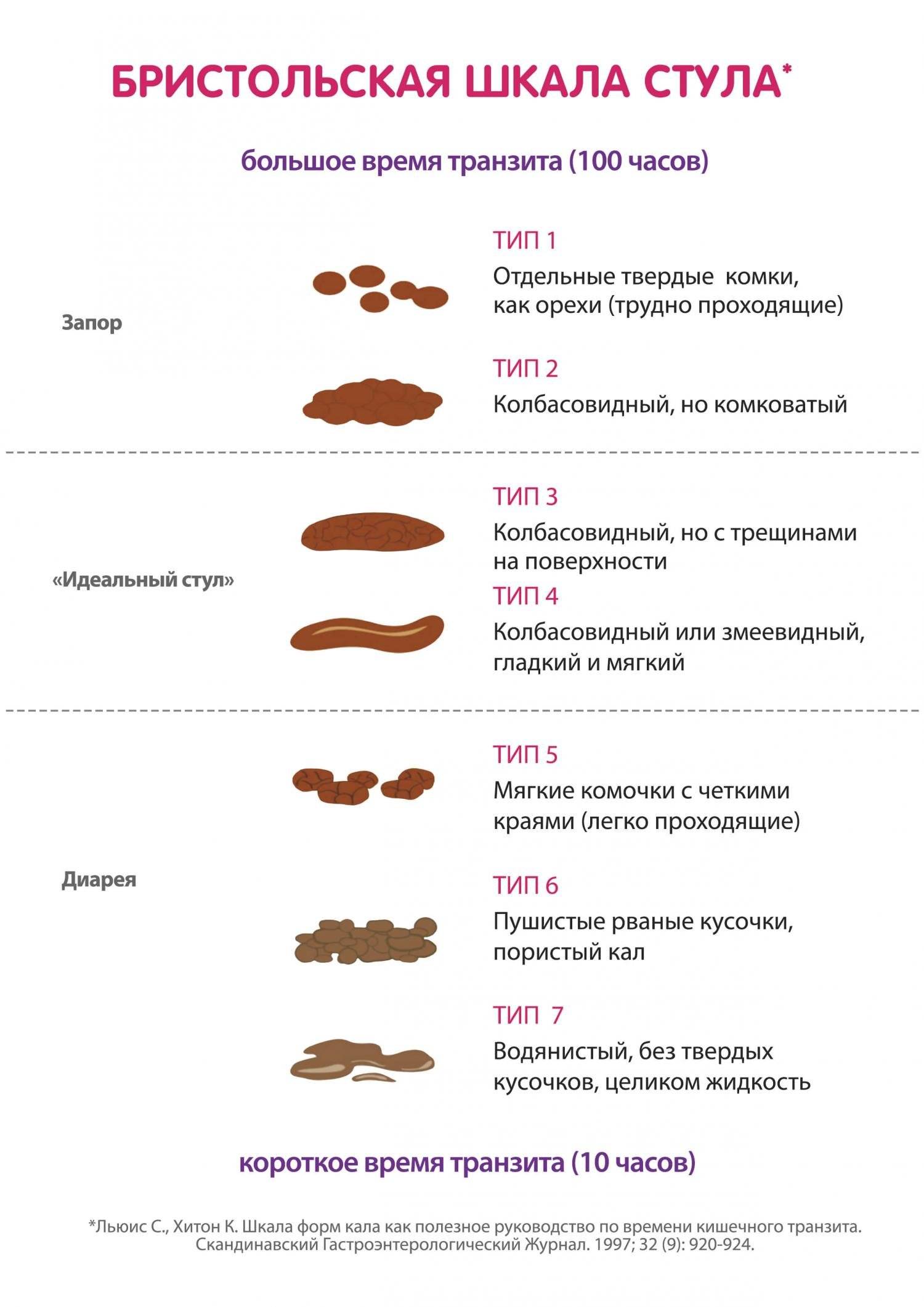 In rare cases, it is accompanied by blood and copious amounts of mucus. Often things go back to normal after a few days, but if it lasts longer, see a doctor
In rare cases, it is accompanied by blood and copious amounts of mucus. Often things go back to normal after a few days, but if it lasts longer, see a doctor  A capsule with mini-cameras is used, the patient swallows it, doctors get the opportunity to assess the patient’s condition
A capsule with mini-cameras is used, the patient swallows it, doctors get the opportunity to assess the patient’s condition 
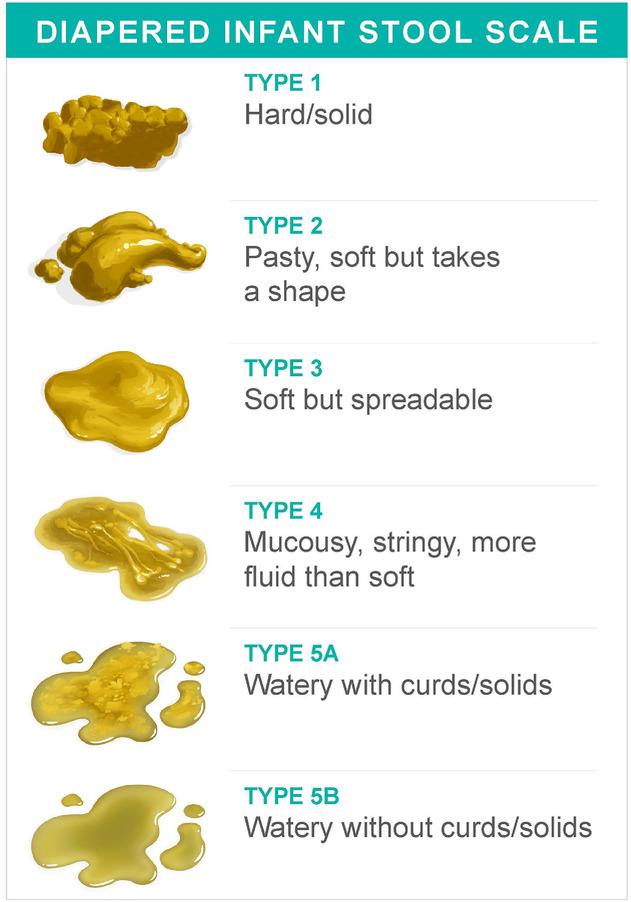 When it spreads to the intestines, diarrhea is observed.
When it spreads to the intestines, diarrhea is observed. 
:max_bytes(150000):strip_icc()/healthy-and-unhealthy-stool-89211-color-V1-9cef9502a0a5433994307575289f34c7.png)
 0 degrees;
0 degrees; 
